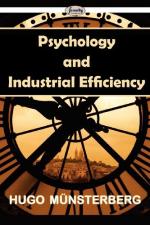A problem which is still too little considered in industrial life is the mutual interference of acquired technical activities. If one connected series of movements is well trained by practice, does it become less firmly fixed, if another series is studied in which the same beginning is connected with another path of discharge? I approached this psychophysical question of learning by experiments which I carried on for a long while with variations of ordinary habits of daily life, asking whether a habit associated with a certain sensory stimulus can function automatically while dispositions for a different habit, previously acquired, remain in the psychophysical system. For instance, I was accustomed to carry my watch in my left-hand vest pocket. For a week I carried it in the right-hand pocket of my trousers and recorded every case in which I first automatically made the movement to the vest. After some time the movement to the right-hand pocket became entirely automatic. When it was sufficiently fixed, I again put the watch in the left-hand vest pocket and recorded how often I unconsciously grasped at the right side when I wanted to see what time it was. As soon as the vest pocket movement had again become fixed, I went back to the right-hand trousers pocket. And so I alternated for a long while, always changing only after reaching complete automatism. But the results in this case and in other similar experiments which I carried on showed that the new automatic connection did not extinguish the after effects of the previous habit. With every new change the number of wrong movements became smaller and smaller, and finally a point was reached at which the dispositions for both movements were equally developed so that no wrong movements occurred when the watch was put into the new position.[22]




